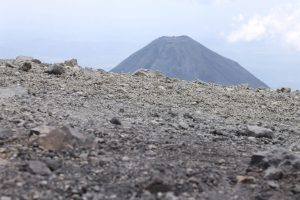Breakthrough Techniques for Technology-Enhanced Global Exploration
The world is constantly changing and evolving, and with it, so are our methods of exploration. As technology advances at an unprecedented rate, the possibilities for global exploration have exponentially increased. Gone are the days of paper maps and compasses – we now have access to advanced tools and techniques that allow us to explore the world in ways we couldn’t have imagined just a few years ago. In this article, we’ll delve into the breakthrough techniques that have transformed the world of technology-enhanced global exploration.
Global Positioning System (GPS)
The Global Positioning System, more commonly known as GPS, is perhaps the most well-known and widely used technology in global exploration. Initially developed by the United States Department of Defense for military use, GPS technology is now available for public use and has revolutionized the way we navigate and explore the world. Using a constellation of satellites orbiting the Earth, GPS can accurately determine the position, velocity, and time of any object or person with a GPS receiver. This technology has made it possible to map out and navigate even the most remote and inaccessible areas of the world with ease.
Geocaching
While GPS technology has proven invaluable for mapping and navigation, it has also paved the way for an exciting new form of global exploration – geocaching. Geocaching is a real-world outdoor treasure hunting game in which players use GPS coordinates to locate hidden containers (called geocaches) at specific locations around the world. Geocaches can vary in size and difficulty, ranging from small boxes hidden in urban areas to larger containers hidden deep in the wilderness. This modern-day treasure hunt has gained a massive following, with millions of geocaches hidden all over the globe, making it the perfect activity for adventure seekers and technology enthusiasts alike.
Virtual Reality (VR)
The development of virtual reality (VR) technology has taken the world of global exploration to a whole new level. With VR, you can now explore some of the most iconic and remote locations on the planet from the comfort of your own home. By wearing a VR headset and using handheld controllers, you can immerse yourself in a virtual world and explore different environments, from the depths of the ocean to the top of Mount Everest. This technology has made it possible for people to experience and appreciate the beauty and diversity of our planet in a way that was previously unimaginable.
Google Earth
One of the most popular applications of VR technology in global exploration is Google Earth. Google Earth is a virtual reality platform that allows you to explore a 3D representation of the Earth based on satellite imagery, aerial photography, and GIS data. With Google Earth VR, you can fly over cities, explore remote locations, and even travel to different planets. This technology has opened up endless possibilities for armchair travelers and has made global exploration accessible to people of all ages and abilities.
Drone Technology
Another breakthrough technology that has transformed the world of global exploration is drones. Drones are unmanned aerial vehicles equipped with cameras and other sensors that can capture high-resolution images and videos from the sky. These flying machines have made it possible to access and map areas that were previously inaccessible, such as remote islands, mountain ranges, and deep valleys. Drones have also been used in archaeology and research to survey and map large areas quickly and accurately, providing valuable insights into our world’s past and present.
Biological Exploration
Advancements in technology have also significantly impacted the field of biological exploration. With advanced tools and techniques, researchers can now study and document plants and animals in their natural habitats without disturbing them. For example, camera traps – motion-activated cameras used to capture images of wildlife – have allowed researchers to study elusive and endangered species in their natural environments without having to physically disturb them. This technology has opened up new opportunities for conservation and has given us a better understanding of the world’s biodiversity.
Conclusion
The breakthrough techniques mentioned above are just a glimpse of the many ways in which technology has improved and enhanced global exploration. These advancements have not only made it easier for us to explore and navigate the world, but they have also allowed us to gain a deeper understanding and appreciation of our planet. As technology continues to progress, the possibilities for global exploration are limitless, and we can only imagine the groundbreaking techniques that await us in the future.











